
An Unintentional Iron Fertilization Experiment
robots that can measure some nutrients (for example, the Biogeochemical Argo floats). Development of sensors to measure iron would represent a major leap forward.”In other phytoplankton and climate change news, a fleet of ocean robots has been deployed to explore the depths of the Labrador Sea as part of a year-long experiment led by scientists from the UK’s National Oceanography Centre. They are studying the ocean processes that help remove carbon dioxide from the atmosphere and store it in the deep sea
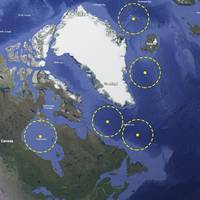
Mother Ship with USV Flotilla Could Boost Coast Guard Capabilities
to the Arctic (32 years ago). The Louis S. St-Laurent's replacement was first planned in the 1980s, but the replacement vessel has yet to enter service.An expediated alternative to such challenges could be a mother ship suitable and seaworthy for the purpose intended. For instance, for the Labrador Sea, the mother ship could be based on a 45-50m offshore tug or standby emergency response vessel. The ship layout could include rescue facilities, towing capability, winches, a flotilla communications hub, and fuel and stores capacity for 60 days of operation.The intent is for the mother ship to
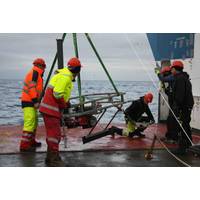
Ocean Robots Explore the Role of ‘Marine Snow’ in Carbon Storage
A fleet of ocean robots and instruments has been deployed to explore the depths of the Labrador Sea as part of a year-long experiment led by scientists from the UK’s National Oceanography Centre (NOC).The ReBELS project (Resolving Biological Carbon Export in the Labrador Sea) is investigating the biological carbon pump, a key ocean process that helps remove carbon dioxide from the atmosphere and store it in the deep sea and without which atmospheric CO₂ would be 50% higher.“The biological carbon pump plays a crucial role in regulating Earth’s climate,” said project

Drilling Greenland Bedrock Shows Rise to Life in the Deep Biosphere
into lead. The dating gave ages of 64-75 million years”, says Henrik Drake, Associate Professor at Linnaeus University, Sweden, and lead author of the study.These ages overlap with tectonic events related to the early stages, or precursors, of the opening of the Atlantic Ocean and the Labrador Sea. This suggests that deep fracture networks in western Greenland opened and were colonized by microorganisms, such as sulfate reducers, during these events. The movements of the continents have thus influenced how the deep biosphere has been colonized.Henrik Drake explain the findings as chemical

New Record Set in Unmanned Vessel Data Collection
for oceanography as it opens up a new way of collecting more data, more regularly, which is key to improving climate predictions and helping us to prepare for what the future may hold.”Last year SAMS deployed two BPRs on the seabed of the Atlantic Ocean: in the Rockall Trough and in the Labrador Sea, east of Canada. Based on the weight of the water above it, the instrument can detect a change in pressure that is the equivalent to a sea-surface height change of one centimeter.By comparing the sea surface height on the western and eastern flanks of the Atlantic Ocean, oceanographers can calculate
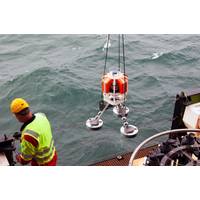
Sonardyne Helps Study Ocean Currents for Climate Insights
, the ocean’s absorption of carbon and European weather.To measure the AMOC’s impact on our changing climate, scientists from the Scottish Association for Marine Science (SAMS) in Oban have deployed two deep-sea Bottom Pressure Recorders (BPRs), one in the north-east Atlantic and one in the Labrador Sea, to record regular changes in sea surface height.The two Fetch AZA BPRs, developed and built by Sonardyne, have been placed thousands of meters below the sea surface where they will record sea surface height to the nearest centimeter, giving the researchers a detailed comparison between the two

ASL Hires Chawarski as Biological Oceanographer
of Fisheries and Oceans Canada (DFO), and the Greenland Institute for Natural Resources.His technical expertise in scientific echo sounders and passion for marine ecology has brought him to some of the far reaches of the ocean. From 2018-2020, Chawarski worked with DFO to develop studies in the Labrador Sea as a part of the Integrated Studies & Ecosystem Characterization of the Labrador Sea Deep Ocean (ISECOLD). His work helped advance methods of eDNA to detect deep-sea fishes and explore the mechanisms that form biogeographic boundaries for fish communities at high-latitudes. In 2019, he took
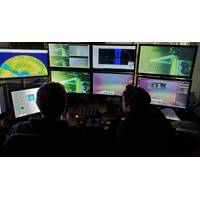
Forum's Arctic Research ROV Completes Sea Trials
achieving complex underwater procedures.”“This is the second ROV we have delivered to Université Laval and we are thrilled it has passed its sea trials and the organization is now in a position to begin studying the deep-water corals and cold deep eco-systems of the northern Labrador Sea and Baffin Bay.”The new Comanche ROV was manufactured at FET’s facility at Kirkbymoorside, Yorkshire and replaces FET’s previously utilised Super Mohawk ROV.Since 2003, CCGS Amundsen has spent over 2,500 research days at sea and accommodated over 1,800 scientists, technicians
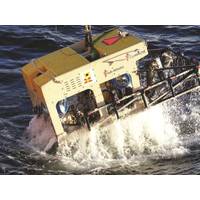
Forum ROV to Support Arctic Research
also supplied by Forum.“The Comanche ROV will represent a pivotal equipment of the research icebreaker CCGS Amundsen. In 2020, it will be deployed at several locations spanning a latitudinal gradient from 58° to 77°N to study deep-water corals and cold seep eco-systems of the northern Labrador Sea and Baffin Bay. The project will generate critical knowledge of biodiversity and marine habitats needed for key ocean conservation initiatives in Canada”, said Dr. Alexandre Forest, Executive Director of Amundsen Science.The new Comanche ROV will be manufactured at Forum’s facility
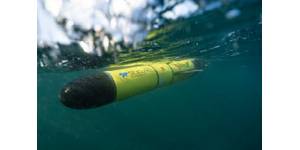
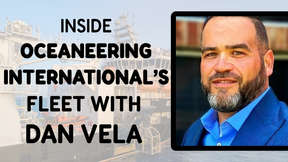
 August 2025
August 2025





